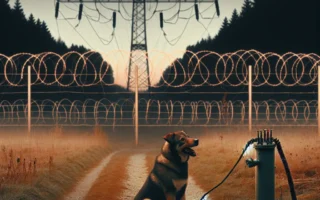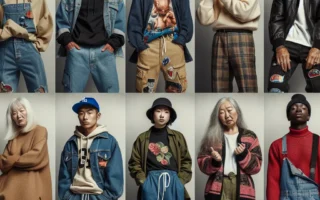The History of Sustainable Clothing
One of the key aspects in the evolution of sustainable clothing practices is the history of sustainable clothing. The concept of sustainable clothing can be traced back to the early 20th century when concerns about environmental impact and worker welfare started to gain attention. In the 1920s, the term “sustainability” began to emerge as the fashion industry started to recognize the need for more responsible and ethical practices.
Fast-forward to the 1960s and 1970s, a significant shift occurred as environmental movements gained momentum. This led to the rise of eco-friendly fabrics such as organic cotton, hemp, and bamboo being used as alternatives to conventional materials. Additionally, second-hand and vintage clothing started to gain popularity as a sustainable choice.
By the late 20th century, sustainable fashion took on a more holistic approach with the introduction of fair trade practices, recycling initiatives, and the promotion of local craftsmanship. The 21st century brought even more focus on sustainability, with technological advancements enabling the development of innovative sustainable materials and production processes.
Overall, the history of sustainable clothing showcases a progression towards more environmentally and socially conscious practices within the fashion industry, emphasizing the importance of minimizing the negative impact on the planet and its inhabitants.
Innovation in Eco-Friendly Textiles
As the demand for sustainable clothing continues to grow, the fashion industry is experiencing a surge in innovative eco-friendly textiles. These materials are revolutionizing the way clothes are made, addressing the environmental impact of traditional textile production. One such innovation is the development of “closed-loop” fabrics, which are made from recycled materials and designed to be recyclable at the end of their life cycle. This approach significantly reduces the amount of textile waste that ends up in landfills. Additionally, advancements in the production of organic cotton and linen are offering sustainable alternatives to conventional resource-intensive crop cultivation.
Furthermore, the emergence of bio-based textiles, such as fibers made from bamboo, soy, or seaweed, showcases the industry’s commitment to exploring renewable and biodegradable sources. These textiles not only minimize the use of synthetic materials but also contribute to the reduction of carbon emissions. In the realm of innovation, the integration of cutting-edge technologies, like 3D knitting and laser cutting, is enabling the creation of garments with minimal fabric waste and energy consumption.
Moreover, the adoption of natural dyes, derived from plant-based sources, eliminates the harmful chemicals typically associated with traditional textile dyeing processes. This shift towards sustainable dyeing methods safeguards the environment and promotes the health and safety of textile workers. The continuous exploration of innovative eco-friendly textiles demonstrates the fashion industry’s commitment to advancing sustainable clothing practices and reducing its ecological footprint.
Ethical Fashion: Balancing Style and Sustainability
As interest in sustainable clothing practices continues to grow, the concept of ethical fashion has become increasingly prominent. Ethical fashion involves not only considering the environmental impact of clothing production but also addressing the social and ethical aspects of the fashion industry. This includes fair treatment and fair wages for workers, as well as ensuring that the entire supply chain operates in an ethical and responsible manner.
One of the key challenges in ethical fashion is balancing style and sustainability. Consumers are increasingly looking for clothing that not only looks good but also aligns with their values regarding sustainability and ethical production. This has led to a growing demand for clothing that is both fashionable and ethically produced, prompting many fashion brands to reconsider their supply chain practices.
With the advancement of sustainable materials and production techniques, it is now possible to create stylish clothing while minimizing environmental impact and ensuring ethical practices throughout the supply chain. From organic cotton and hemp to recycled materials and innovative sustainable fabrics, fashion designers have a wide array of options to create clothing that is both trendy and environmentally friendly.
Furthermore, the rise of ethical fashion has also led to increased transparency within the industry. Consumers are demanding more information about where and how their clothing is produced, leading to greater accountability from fashion brands. This transparency allows consumers to make more informed choices and support brands that align with their values of ethical production and sustainability.
In conclusion, ethical fashion plays a crucial role in the evolution of sustainable clothing practices. By finding the balance between style and sustainability, fashion brands can meet the growing demand for clothing that not only looks good but also upholds ethical and environmentally responsible standards throughout the production process.
The Future of Circular Fashion Economy
The future of circular fashion economy is an integral part of the evolution of sustainable clothing practices. As the fashion industry takes strides towards more sustainable and environmentally friendly practices, the concept of circular fashion economy emerges as a key focus area. The traditional linear model of “take, make, dispose” is being replaced by a circular approach that emphasizes recycling, reusing, and reducing waste.
In the future, the circular fashion economy is poised to revolutionize the way clothing is produced, consumed, and disposed of. This shift is driven by a growing consumer demand for ethically produced garments and a desire to minimize the environmental impact of the fashion industry. Brands are increasingly adopting innovative practices such as closed-loop recycling, product longevity, and sustainable material sourcing to align with the principles of circular fashion.
Furthermore, technological advancements have facilitated the development of new materials and production processes that support the circular fashion economy. From bio-based fibers to 3D knitting techniques, these innovations are paving the way for a more sustainable and efficient fashion industry. Additionally, the rise of rental and resale platforms is promoting a more circular approach to fashion consumption by extending the lifespan of clothing items.
As the circular fashion economy continues to gain momentum, it is expected to influence not only the production and consumption patterns within the fashion industry but also the mindset of consumers. Education and awareness about the benefits of circular fashion will play a crucial role in shaping the future of clothing practices, encouraging more people to embrace sustainable choices and contribute to a more circular economy.
Impact of Sustainable Clothing on the Environment
One of the most pressing issues in the fashion industry today is the environmental impact of clothing production. The evolution of sustainable clothing practices has been a response to the growing concern over the harmful effects of traditional fashion manufacturing on the environment. The production of conventional clothing involves the extensive use of resources such as water, energy, and various chemicals, leading to pollution and waste.
However, the adoption of sustainable practices in clothing production has begun to mitigate these negative effects. Sustainable clothing aims to reduce the use of natural resources, minimize pollution, and decrease waste throughout the entire lifecycle of a garment. This includes implementing eco-friendly materials, such as organic cotton, bamboo, or recycled fibers, which require less water and energy to produce compared to traditional materials.
In addition, sustainable clothing practices often involve utilizing innovative manufacturing techniques that reduce the environmental impact. For example, some brands have embraced techniques like waterless dyeing or using plant-based dyes, which significantly minimize water pollution compared to conventional dyeing processes.
Furthermore, the concept of “circular fashion” has gained momentum, emphasizing the importance of designing garments for longevity and recyclability. This approach aims to extend the lifespan of clothing, thus reducing the amount of textile waste that ends up in landfills.
Overall, the evolution of sustainable clothing practices is playing a crucial role in lessening the environmental impact of the fashion industry. By promoting eco-friendly materials, innovative manufacturing processes, and a shift towards circular fashion, sustainable clothing is striving to create a more sustainable and environmentally friendly future for the industry.


